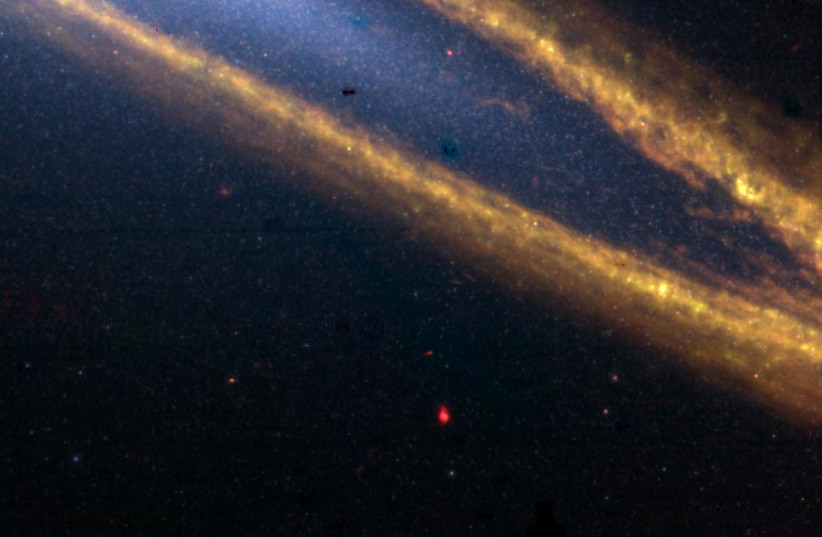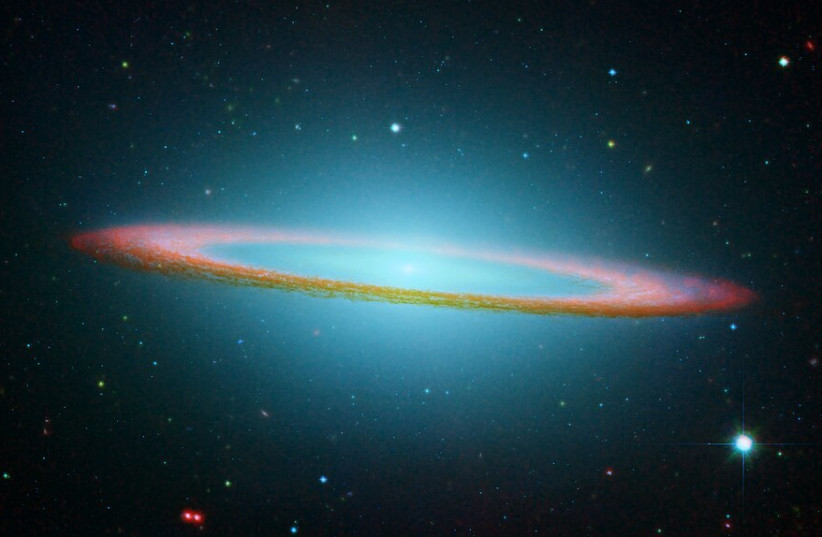An astronomer in Spain has discovered a new active galaxy that appears to be inside another, by analyzing images of the Sombrero Galaxy obtained with the Hubble Space Telescope.
This was first shared on August 11 in a paper published on arXiv, an open-access archive for academic articles, meaning it has not yet been peer-reviewed.
The discovery sheds some light on one of our galaxy's most fascinating and unique neighbors, located in the Virgo Supercluster, where the Milky Way can be found.
The secret second galaxy inside the Sombrero Galaxy
The Sombrero Galaxy, also known as Messier 104 or NGC 4594 is an unbarred spiral galaxy 31 million light years in between the Virgo and Corvus constellations and is one of the most massive celestial objects in the Virgo Cluster, with a mass equal to 800 billion suns. It has also been classified as a peculiar galaxy, a term used for galaxies that are unusual in size, shape, or composition.
Two things about this galaxy have always stood out: Its extremely bright nucleus at its center and the gigantic ring of dust surrounding it, giving it the image of a sombrero, hence its nickname.

Due to its striking features and how long scientists have known of its existence, the Sombrero Galaxy has received extensive scientific research ever since it was first discovered back in 1781.
However, another feature of this galaxy is that it possesses a number of globular clusters, which are large concentrations of stars bound together by gravity. These exist in every galaxy, including in the Milky Way, though they are usually located more on the edge.
But according to the findings of Elio Quiroga Rodriguez, an astronomer at the Mid Atlantic University in Spain, a strange object previously thought to be a globular cluster (which has been cataloged in the Pan-STARRS1 data archive as PSO J190.0326-11.6132) may be something else – an entirely separate galaxy, one that might possess an active galactic nucleus (AGN) at its center.
This galaxy appears to have two spiral arms and has been tentatively dubbed the Iris Galaxy. The fact that it might have an AGN, a compact region at the center of a galaxy that is extremely luminous and energetic, could indicate the presence of star formation or the activity of a supermassive black hole at the center.
How can a galaxy be formed inside of another galaxy?
It actually isn't as unprecedented as one might think.
For one thing, it wouldn't be the only other galaxy close to the Sombrero Galaxy. Back in 2009, scientists discovered a dwarf galaxy that accompanied the Sombrero Galaxy. As such, it isn't unprecedented for the Sombrero Galaxy to have another companion of sorts. However, that's only if it really is a companion galaxy in the first place.

If the Iris Galaxy is part of the Sombrero Galaxy, as in if it is bound to its gravity, then most likely, it would be a very small galaxy, just around 1,000 light-years in size.
But if it isn't part of the Sombrero Galaxy, then it is likely much farther away and, therefore, much bigger. According to Rodriguez, the Iris Galaxy would have to be at least 65 million light years away and it could be around 71,000 light years in size.
